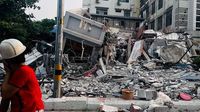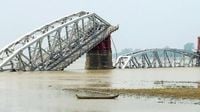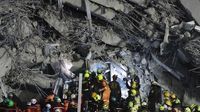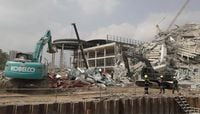A devastating earthquake of magnitude 7.7 struck Mandalay, Myanmar, on Friday, March 28, 2025, resulting in a catastrophic humanitarian crisis. As of Saturday, March 29, the death toll has reached at least 1,650, with experts warning that the number could exceed 10,000 as rescue efforts continue and the full extent of the destruction becomes apparent.
The earthquake, which hit around noon local time, caused extensive damage across Mandalay and was felt as far away as Bangkok, Thailand. Reports indicate that in Myanmar alone, over 3,000 people have been injured, and 139 remain missing. In Thailand, at least 17 fatalities have been confirmed, with 32 injured and 83 still unaccounted for, primarily due to the collapse of a 30-story skyscraper under construction in Bangkok.
Rescue teams in Mandalay have been working tirelessly to locate survivors trapped under the rubble of collapsed buildings, including the Sky Villa residential complex, where 29 people were rescued after being trapped for over 30 hours. Tragically, nine bodies have also been recovered from this site. Among the deceased are 12 children and their teacher from the West Mye Mye Kyi kindergarten, which also collapsed during the quake.
The Myanmar military junta has acknowledged the severity of the situation, with reports indicating that at least 694 deaths and 1,670 injuries occurred in Mandalay alone. The junta has launched an urgent appeal for international humanitarian aid, stating that blood supplies are critically needed in the most affected areas. The United Nations has allocated $5 million for initial relief efforts, while the European Union has promised €2.5 million in emergency aid.
International responses have begun to pour in, with countries like China and India sending rescue teams and humanitarian assistance. A Chinese emergency medical rescue team of 37 experts arrived in Yangon with specialized equipment, while India dispatched military aircraft loaded with aid and search and rescue personnel. The UK government has pledged £10 million in humanitarian aid, emphasizing the importance of providing food, water, and medical supplies to the hardest-hit regions.
Despite the ongoing crisis, the military junta in Myanmar has continued airstrikes in rebel-held areas, raising concerns about the safety of rescue operations and the humanitarian response. The Red Cross has described the level of destruction as unprecedented in Asia for over a century, highlighting the urgent need for coordinated international support.
Pope Francis has expressed his solidarity with the people of Myanmar, urging prayers for those affected by the earthquake. His call for compassion comes as humanitarian organizations, including Save the Children, emphasize the dire need for psychological support for children and families impacted by this disaster.
In the wake of the earthquake, the situation remains fluid, with ongoing aftershocks complicating rescue efforts and raising fears of further casualties. The United States Geological Survey reported that more than ten aftershocks have occurred, with magnitudes ranging from 4.1 to 4.5, intensifying the urgency for immediate aid and support.
The full extent of the devastation is still being assessed, but initial estimates suggest that around 2,900 buildings have been destroyed and numerous roads and bridges have been rendered impassable. As rescue operations continue, the international community is called upon to provide assistance to help Myanmar recover from this unprecedented disaster.
As the days progress, the hope of finding more survivors diminishes, and the focus shifts toward providing essential aid and rebuilding the shattered communities. The resilience of the Myanmar people, already tested by years of conflict and hardship, will be further challenged as they face the aftermath of this natural disaster.








